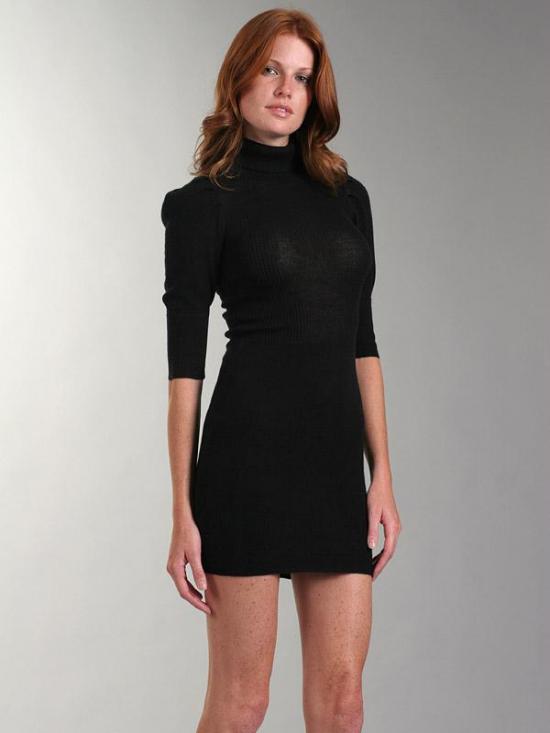There are two different kinds of beatnik fashion: real fashion (what 1950s beatniks actually wore) and a beatnik costume (as worn by the woman in the photo above). Both looks are easy to replicate; why not learn both?
The word "beatnik" was coined by San Francisco columnist Herb Caen in 1958, to describe the young beat generation. These "bearded cats and kits," much like today's hipsters, didn't work, hung out in coffee shops and aspired to artistic grandeur.
There aren't too many photos of beatniks, so one has
to go by the photos we have and the descriptions of former scenesters.
Adam Faith described beatnik cafes as "all black polo necks and
existentialism." 1950s fashion was more conservative than today's fashion; beatniks therefore did not have to go far to arouse society's ire.
Striped shirts, oversized sweaters and cowl collared tops were favored for both sexes.
Young women often wore collared jerseys, or short-sleeved sweaters, with slim-fit pants or pencil skirts, a fetching and feminine look that was still sufficiently bohemian. In rebellion to the frilly aesthetic of the time, many women favored capri pants,
black jeans and stirrup slacks. Jewelry, if worn, often featured
eastern religious symbols, reflecting the beats' inchoate,
eastern-inspired philosophy.
Some daring young
men favored skinny black jeans, though this was more a rocker look. Many
dressed almost as conservatively as their parents, in slacks with a
belt and short-sleeved white shirts.
Beatnik was the first youth subculture to favor wearing all black. Like goths, beatniks were also given over to philosophical maundering––although beatniks were more existential and less maudlin.
Young men let their hair grow,
though not too much; many favored a pompadour or an outgrown crew cut.
Some beatnik men wore a goatee, a "soul patch" or sideburns. Others just
let their facial hair grow, a real act of rebellion in the 1950s and early 1960s.
Young women generally left their hair long, or cut it short in a bob. It would not surprise me, though, if some had short androgynous haircuts, a la Teddy Girls.




ไม่มีความคิดเห็น:
แสดงความคิดเห็น